Welcome to the mesmerizing world of the Valley of the Kings, an ancient burial ground that housed the illustrious pharaohs of Ancient Egypt. Nestled on the west bank of the Nile River, this sacred valley encapsulates the mysteries and grandeur of a civilization that spanned millennia. Step into a realm where history intertwines with religion, and where the quest for immortality was fervently pursued. Discover the architectural marvels, iconic tombs, and the religious beliefs that shaped the afterlife practices of the ancient Egyptians. Unearth the tales of discovery and excavation, and delve into the challenges faced in preserving this magnificent necropolis. Join us on this extraordinary journey to unravel the secrets of the Valley of the Kings.
Contents
- The History of the Valley of the Kings
- The Architecture and Layout
- Iconic Tombs of the Pharaohs
- Religious Beliefs and Afterlife
- Excavation and Preservation Efforts
- Conclusion
-
Frequently Asked Questions
- 1. How many tombs are there in the Valley of the Kings?
- 2. Why was the Valley of the Kings chosen as a burial ground?
- 3. How were the tombs in the Valley of the Kings constructed?
- 4. Were all the pharaohs buried in the Valley of the Kings?
- 5. Are the tombs in the Valley of the Kings open to the public?
- 6. Have all the tombs in the Valley of the Kings been discovered?
- 7. What were the funerary rituals performed in the Valley of the Kings?
- 8. What is the significance of the Book of the Dead in the Valley of the Kings?
- 9. How have modern excavation efforts contributed to our understanding of the Valley of the Kings?
- 10. What challenges are faced in preserving the tombs in the Valley of the Kings?
- References
-
Frequently Asked Questions
- What is the Valley of the Kings?
- When was the Valley of the Kings used?
- How many tombs are in the Valley of the Kings?
- Why was the Valley of the Kings chosen as a burial site?
- Who was allowed to be buried in the Valley of the Kings?
- Are all the tombs in the Valley of the Kings the same?
- What is the significance of Tutankhamun’s tomb?
- How were the tombs in the Valley of the Kings decorated?
- What religious beliefs guided the burial practices in the Valley of the Kings?
- Are the tombs in the Valley of the Kings open to the public?
- References
- Read More
The History of the Valley of the Kings
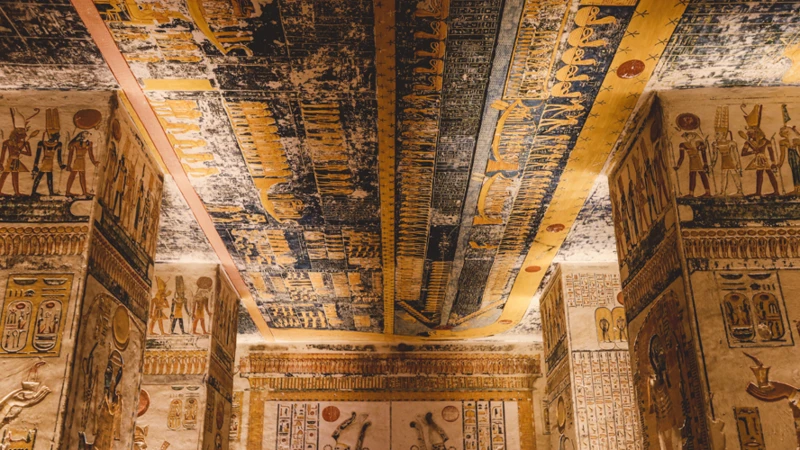
The Valley of the Kings holds a rich history that stretches back over 500 years during the New Kingdom period of ancient Egypt. It served as the royal burial ground for pharaohs and other members of the elite, located on the west bank of the Nile River, across from modern-day Luxor. The valley’s significance lies in its role as a gateway to the afterlife, where the pharaohs could continue their rule and enjoy eternal paradise. The idea of constructing a separate burial site for pharaohs arose as a response to the frequent tomb robberies that plagued the earlier burial grounds. By providing a hidden location, adorned with intricate murals depicting religious and funerary scenes, the Valley of the Kings aimed to protect the precious treasures interred within its tombs. To this day, it remains a testament to the wealth, power, and spiritual beliefs of the ancient Egyptian civilization.
The Purpose and Significance of the Valley
The Valley of the Kings held immense purpose and significance for the ancient Egyptians. It was not merely a burial ground, but rather a sacred space where pharaohs could transition into the afterlife and continue their divine rule. The valley’s location on the west bank of the Nile River held religious significance, as the setting sun symbolized the journey to the underworld. The construction of elaborate tombs within the valley was a demonstration of the pharaoh’s power, wealth, and devotion to the gods. These tombs were designed to house the pharaoh’s physical body, as well as all the necessary items and provisions for the afterlife, including food, clothing, jewelry, and even servants. The religious rituals and offerings conducted within the tombs were believed to ensure the pharaoh’s successful transition into the divine realm. The Valley of the Kings stood as a testament to the ancient Egyptian belief in the afterlife and the eternal reign of their divine leaders.
Discovery and Exploration
The Valley of the Kings remained hidden from the world for centuries, until its discovery in the early 19th century. The process of uncovering this ancient burial ground began with the French Egyptologist Jean-François Champollion, who deciphered the Rosetta Stone and made significant strides in unraveling the mysteries of hieroglyphics. His work laid the foundation for future explorers who sought to unearth the secrets of ancient Egypt. British archaeologist Howard Carter, along with his team, made one of the most remarkable discoveries in the valley’s history when they uncovered the tomb of the famous pharaoh Tutankhamun in 1922. This finding caused a worldwide sensation and sparked renewed interest in exploring the Valley of the Kings. Over the years, countless expeditions and excavations have taken place in the valley, each unearthing new tombs, artifacts, and insights into the lives and beliefs of the ancient Egyptians. While the major tombs have been discovered, there may still be hidden chambers and treasures waiting to be found, making the discovery and exploration of the Valley of the Kings an ongoing adventure.
The Architecture and Layout
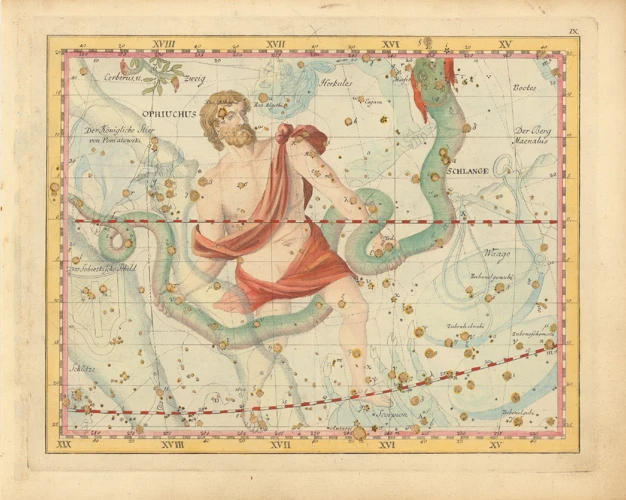
The architecture and layout of the Valley of the Kings showcases the meticulous planning and craftsmanship of the ancient Egyptians. The tombs were carefully designed to reflect the religious beliefs and rituals associated with the afterlife. The layout of the valley follows a linear pattern, with the main entrance leading to a corridor that descends into the heart of the tomb. The corridors are adorned with intricate reliefs depicting scenes from Egyptian mythology and religious ceremonies. Within the tomb, multiple chambers can be found, including the burial chamber where the pharaoh’s sarcophagus was placed. The ceilings and walls of these chambers are often adorned with colorful paintings and hieroglyphic inscriptions, providing a glimpse into the grandeur and opulence of the ancient Egyptian funerary practices. Each tomb has its own unique design and features, showcasing the individuality and personality of the pharaoh it was built for. From the elaborate decorations in the tomb of Tutankhamun to the grandeur of Hatshepsut’s Mortuary Temple, the Valley of the Kings is a testament to the architectural brilliance of the ancient Egyptians.
Design and Construction
Design and construction in the Valley of the Kings showcased the remarkable engineering prowess of the ancient Egyptians. The tombs were strategically built into the natural rock formation of the valley, utilizing its slopes and contours to create hidden chambers and corridors. The architects carefully planned the layout, ensuring that each tomb had its own unique design and architectural features. The construction involved carving and excavating the rock to create elaborate tomb complexes. The tombs were decorated with colorful scenes depicting religious rituals, offerings to the gods, and the pharaoh’s journey to the afterlife. The walls were adorned with hieroglyphic inscriptions containing spells and instructions to guide the pharaohs in their journey. Some tombs even contained intricate sarcophagi and funerary furniture made from precious materials like gold and alabaster. The level of precision and artistry displayed in the design and construction of these tombs is a testament to the advanced skill and craftsmanship of the ancient Egyptians.
Main Features and Tombs
The Valley of the Kings is renowned for its impressive architectural features and elaborate tombs that have captivated scholars and visitors alike. The tombs within the valley exhibit a range of designs and sizes, reflecting the differing beliefs and status of the pharaohs. One common feature among the tombs is the steep descent into the rock, leading to a long corridor known as the entrance passage. This passage often opens up into a series of chambers, including a burial chamber where the sarcophagus of the pharaoh would be placed. The walls of these chambers are adorned with intricate carvings, paintings, and hieroglyphics that depict scenes from the Book of the Dead and various religious rituals. Some of the tombs also feature hidden chambers and corridors, adding to the mysterious allure of the valley. Notable tombs include that of Tutankhamun, whose burial treasures have become synonymous with the wealth of ancient Egypt, Ramses IV, known for its well-preserved decorations, and Hatshepsut, the powerful female pharaoh. Exploring these tombs offers a glimpse into the opulence and religious beliefs of the pharaohs, showcasing the ingenuity and artistry of ancient Egyptian civilization.
Iconic Tombs of the Pharaohs
![]()
The Valley of the Kings is renowned for its iconic tombs, each holding a unique story and glimpse into the grandeur of the pharaohs. One of the most famous and well-preserved tombs is that of Tutankhamun, also known as King Tut. Discovered by Howard Carter in 1922, the tomb of Tutankhamun dazzled the world with its extraordinary treasures, including the iconic golden mask that adorned the young pharaoh’s mummified remains. Another notable tomb is that of Ramses IV, characterized by its intricate wall reliefs and detailed decorations depicting scenes from the Book of the Dead. Ramses IV’s tomb showcases the scribe’s obsession with preserving their legacy and ensuring a successful journey into the afterlife. Lastly, the tomb of Hatshepsut, one of the few female pharaohs in ancient Egypt, is a marvel of architectural design. Carved into the natural rock formations, the temple-like structure reflects Hatshepsut’s reign, featuring statues, sanctuaries, and vibrant wall paintings that tell her story as a powerful ruler. Each tomb within the Valley of the Kings offers a unique insight into the lives and beliefs of the pharaohs, showcasing the mastery of artistry and craftsmanship during that era.
Tutankhamun’s Tomb
Tutankhamun’s Tomb, discovered by British archaeologist Howard Carter in 1922, is one of the most famous and significant finds in the Valley of the Kings. This young pharaoh’s tomb provided an unprecedented glimpse into the riches and splendor of the ancient Egyptian royal burials. Upon entering the tomb, Carter and his team were astounded by the untouched treasures, including the iconic golden burial mask that adorned Tutankhamun’s mummy. The tomb itself consists of four chambers, each filled with precious artifacts, funerary goods, and intricate wall paintings that depicted scenes from ancient Egyptian mythology and the pharaoh’s journey to the afterlife. The discovery of Tutankhamun’s tomb offered invaluable insights into the funerary rituals, religious beliefs, and artistic mastery of the ancient Egyptians. It remains a testament to the enduring legacy of one of Egypt’s most enigmatic pharaohs. To learn more about the incredible craftsmanship of ancient civilizations, you can explore the artistic virtuosity of the Inca.
Ramses IV’s Tomb
Ramses IV’s Tomb is one of the fascinating tombs found in the Valley of the Kings. This tomb, also known as KV2, belonged to Ramses IV, the fourth pharaoh of the Twentieth Dynasty. It is an intricate and well-preserved burial site that offers a glimpse into the grandeur and religious beliefs of ancient Egypt. The tomb features a long corridor leading to a series of chambers adorned with colorful murals depicting scenes from the Egyptian Book of the Dead. The burial chamber itself contains a large sarcophagus, believed to have once contained the mummified remains of Ramses IV. The walls of the tomb are covered in intricate hieroglyphs and illustrations, showcasing the pharaoh’s journey into the afterlife and his hope for resurrection. Exploring Ramses IV’s Tomb provides a remarkable insight into the religious and funerary practices of ancient Egypt, allowing us to appreciate the craftsmanship and artistic virtuosity of the era.
Hatshepsut’s Tomb
Hatshepsut’s Tomb, designated as KV20, is one of the remarkable tombs situated in the Valley of the Kings. Hatshepsut, the famous female pharaoh, reigned during the 18th Dynasty of Egypt and was known for her prosperous reign and ambitious architectural projects. Her tomb, built into the mountainside, showcases the impressive craftsmanship and engineering skills of the ancient Egyptians. The architectural design of the tomb incorporates a long, descending corridor leading to a burial chamber that features stunning reliefs and intricate carvings depicting religious scenes and offerings to the gods. Hatshepsut’s mummy was originally placed in a hidden location within her tomb, but unfortunately, it was later discovered and moved. Despite this, her tomb remains a testament to her power and legacy. Exploring Hatshepsut’s tomb is like stepping into a time capsule, revealing the grandeur and achievements of this influential female pharaoh.
Religious Beliefs and Afterlife
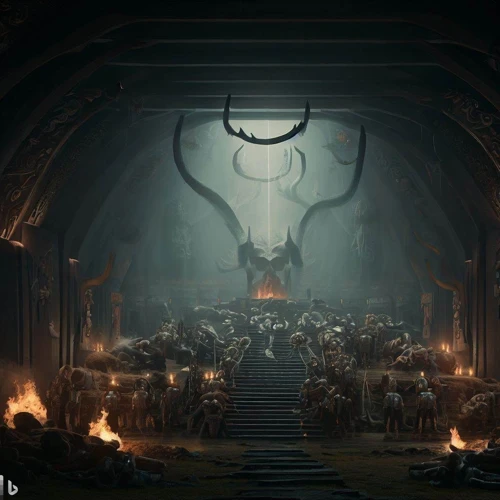
Religious beliefs and the concept of the afterlife held tremendous significance in ancient Egyptian culture, and they played a central role in the design and purpose of the Valley of the Kings. The pharaohs of Egypt were considered divine beings, and their tombs were created as elaborate structures to ensure their successful transition to the afterlife. Funerary rituals and offerings were meticulously conducted to provide the pharaohs with everything they would need in the next world. The Book of the Dead, a collection of magical spells and instructions, was buried with the pharaohs to guide them through their journey in the underworld. The belief in the afterlife was deeply intertwined with the concept of maat, the underlying order and harmony of the universe. It was believed that maintaining maat in life would ensure a favorable afterlife. The Valley of the Kings served as a gateway to the realm of the gods, where the pharaohs would continue their rule as immortal beings. This profound connection between religion, the afterlife, and the Valley of the Kings highlights the enduring spiritual beliefs of the ancient Egyptians.
Funerary Rituals and Offerings
Funerary rituals and offerings played a crucial role in the beliefs and practices surrounding the afterlife in ancient Egypt. The Egyptians believed that by providing the deceased with everything they would need in the afterlife, they could ensure a smooth transition and eternal happiness. The rituals began with the purification and mummification of the body. The corpse would be carefully prepared, organs removed, and the body wrapped in linen bandages to preserve it for eternity. Then, the funerary procession would take place, where family and mourners would accompany the deceased to their final resting place in the Valley of the Kings. Once there, priests would perform ceremonies and offer prayers to the gods, invoking their blessings for the journey ahead. Offerings such as food, drink, and figurines representing servants, animals, and possessions were placed in the tomb to sustain the deceased in the afterlife. These offerings were believed to become magically real and accessible to the pharaohs in the spiritual realm. The meticulous attention to detail in the funerary rituals and the lavish offerings highlight the ancient Egyptians’ deep reverence and commitment to ensuring the comfort and well-being of their departed rulers as they embarked on their eternal journey.
The Book of the Dead and Other Texts
The Book of the Dead, also known as the “Book of Coming Forth by Day,” played a significant role in ancient Egyptian funerary practices within the Valley of the Kings. This collection of spells and religious texts was believed to guide the deceased through the complex journey of the afterlife. Compiled on papyrus scrolls, it contained prayers, hymns, and magical formulas that provided instructions on how to navigate the treacherous trials and reach the eternal paradise. These texts were accompanied by vivid illustrations depicting scenes from the life of the deceased and the realms they would encounter. The Book of the Dead emphasized the importance of preserving physical remains, such as mummification and the use of canopic jars. It also highlighted the significance of performing the proper rituals and making offerings to appease the gods and secure a prosperous afterlife. Other texts, such as the Amduat and the Litany of Re, also held key roles in preparing the pharaohs for their journey to the realm of Osiris. These texts, with their rich symbolism and intricate narratives, provide valuable insights into the religious beliefs and practices of the ancient Egyptians. They serve as a window into their worldview, their reverence for the divine, and their quest for eternal existence. To learn more about the intriguing symbolism found in ancient cultures, take a look at our article on the mysterious nature of quincunxes in astrology.
Ancient Egyptian Afterlife Beliefs
Ancient Egyptian afterlife beliefs were deeply rooted in the religious and spiritual practices of the civilization. The Egyptians believed that death was not the end, but rather a transition to the eternal realm. They believed in the existence of multiple afterlife destinations, each with its own characteristics and requirements for entry. The most revered destination was the Field of Reeds, a paradise where the deceased would live in eternal bliss, enjoying all the pleasures of their earthly life. To ensure a successful journey to the afterlife, the Egyptians performed elaborate funerary rituals and made offerings to the gods. They believed in the importance of preserving the physical body through mummification, as they believed that the body was needed for the soul to recognize and inhabit in the afterlife. Protection and guidance were also sought from the gods, as depicted in the Book of the Dead and other funerary texts, which contained spells, prayers, and instructions to assist the deceased in their journey. Through their intricate beliefs and rituals, the ancient Egyptians sought to secure a prosperous and harmonious afterlife, where they could continue to exist in peace and prosperity for eternity.
Excavation and Preservation Efforts
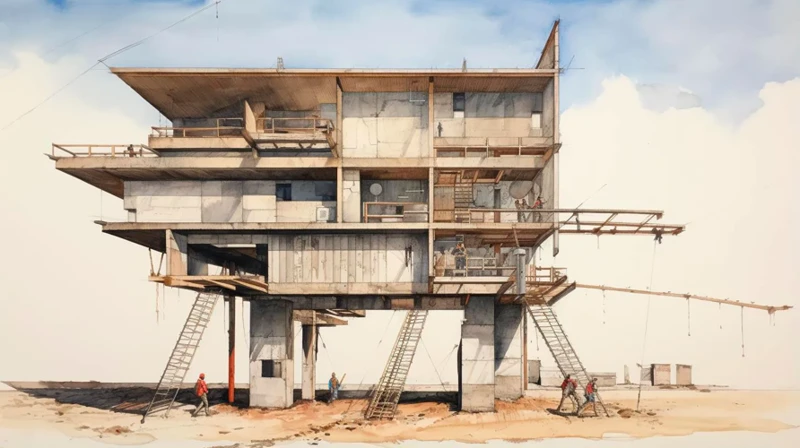
Excavation and preservation efforts have played a crucial role in uncovering the secrets of the Valley of the Kings and ensuring its preservation for future generations. Since its discovery in the early 19th century, numerous archaeological expeditions have been conducted to unearth and study the tombs hidden within this ancient necropolis. Notable explorers such as Howard Carter and Theodore M. Davis dedicated years of their lives to meticulously documenting and excavating the tombs, yielding priceless artifacts and invaluable insights into ancient Egyptian culture. These expeditions have provided a wealth of knowledge about the pharaohs and their burial practices, shedding light on the religious beliefs and afterlife rituals of the ancient Egyptians. However, preservation efforts have also been paramount in safeguarding the delicate structures and wall paintings within the tombs. Strict conservation measures, including climate control systems, restricted visitor access, and the use of advanced technology to prevent deterioration, have been implemented to protect the Valley of the Kings. These ongoing efforts aim to balance the necessity of research and exploration with the long-term preservation of this invaluable cultural heritage site.
Modern Excavations and Discoveries
In recent years, modern excavations and discoveries have shed new light on the Valley of the Kings and deepened our understanding of this ancient necropolis. Archaeologists continue to unearth hidden treasures and unravel the secrets of the pharaohs. One notable discovery was the tomb of Tutankhamun in 1922 by British archaeologist Howard Carter. This extraordinary find revealed a wealth of artifacts and provided unprecedented insight into the life and reign of the young pharaoh. Further explorations have revealed additional tombs and burial sites, including the recently discovered tomb of King Ay, who succeeded Tutankhamun. These findings have expanded our knowledge of the royal lineage and the intricate burial rituals practiced by the ancient Egyptians. Ongoing excavations and advancements in technology offer hope for future discoveries that could further enrich our understanding of the Valley of the Kings and the civilization it once housed.
Preservation and Conservation Challenges
Preservation and conservation efforts at the Valley of the Kings face numerous challenges. The first challenge is the natural deterioration caused by elements such as sunlight, heat, and humidity. Exposure to these factors can lead to the fading and deterioration of the intricate paintings and carvings inside the tombs. To combat this, measures such as limited visitor access, temperature and humidity controls, and strategic lighting are implemented. Another challenge is the ongoing battle against water damage. The valley is located near water sources, and the rise and fall of the groundwater table can pose a threat. Drainage systems are in place to redirect water away from the tombs, and regular monitoring is done to ensure the preservation of the structures. Tomb robberies and vandalism are additional concerns. Despite stringent security measures, the threat of looting and damage remains. Increased surveillance, training for security personnel, and international collaboration have been implemented to mitigate these risks. Lastly, the impact of tourism on the site is a delicate balance. While tourism provides vital revenue for preservation efforts, it also brings wear and tear from foot traffic, as well as the potential for unauthorized access. Strict regulations, visitor management strategies, and educational programs are in place to strike a balance between accessibility and conservation. Through these ongoing preservation and conservation efforts, the Valley of the Kings will continue to stand as a testament to the grandeur of ancient Egypt, ensuring that future generations can marvel at its magnificence.
Conclusion
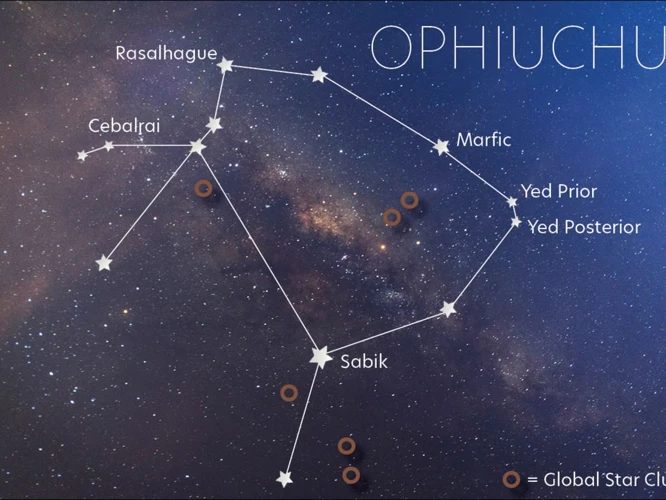
In conclusion, the Valley of the Kings stands as a testament to the incredible achievements of the ancient Egyptians. This sacred necropolis provides a glimpse into their rich history, religious beliefs, and architectural brilliance. The purpose and significance of the valley as the final resting place for pharaohs and their eternal journey to the afterlife is awe-inspiring. The discovery and exploration of the valley have captivated archaeologists and historians, unearthing countless treasures and shedding light on the lives of the pharaohs. The iconic tombs, such as the majestic tomb of Tutankhamun and the grandeur of Ramses IV and Hatshepsut, continue to fascinate visitors from around the world. The detailed funerary rituals and the sacred texts like the Book of the Dead provide insights into ancient Egyptian beliefs in the afterlife. While modern excavations and preservation efforts have revealed more of the valley’s secrets, challenges remain in safeguarding this extraordinary site for future generations to appreciate. The Valley of the Kings is a testament to the artistic, spiritual, and cultural legacy of ancient Egypt, standing as a symbol of human ingenuity and eternal fascination.
Frequently Asked Questions

1. How many tombs are there in the Valley of the Kings?
The Valley of the Kings is home to over 60 known tombs. These tombs were built for pharaohs, queens, and other high-ranking officials of Ancient Egypt.
2. Why was the Valley of the Kings chosen as a burial ground?
The Valley of the Kings was chosen as a burial ground because it provided a hidden location that offered protection against tomb robbers. The valley’s remote location and natural rock formations made it an ideal place to safeguard the treasures and the mummified remains of the pharaohs.
3. How were the tombs in the Valley of the Kings constructed?
The tombs in the Valley of the Kings were meticulously designed and constructed. The process involved carving out intricate chambers and passages into the bedrock of the valley and adorning the walls with elaborate decorations and religious scenes.
4. Were all the pharaohs buried in the Valley of the Kings?
No, not all pharaohs were buried in the Valley of the Kings. While many pharaohs chose to be buried there, some opted for alternate burial sites, such as the pyramids of Giza or the Valley of the Queens.
5. Are the tombs in the Valley of the Kings open to the public?
Yes, some of the tombs in the Valley of the Kings are open to the public. However, due to preservation efforts and to protect the delicate artwork, only a few tombs are accessible at any given time, with some requiring an additional ticket for entry.
6. Have all the tombs in the Valley of the Kings been discovered?
No, it is believed that there are still undiscovered tombs in the Valley of the Kings. Ongoing excavations and research continue to shed light on this ancient burial ground, with the potential for new discoveries in the future.
7. What were the funerary rituals performed in the Valley of the Kings?
The funerary rituals in the Valley of the Kings were elaborate and carefully conducted. They included purification rituals, the opening of the mouth ceremony, and the presentation of offerings to ensure the pharaoh’s successful journey to the afterlife.
8. What is the significance of the Book of the Dead in the Valley of the Kings?
The Book of the Dead was a collection of spells and prayers believed to assist the deceased on their journey through the afterlife. Many tombs in the Valley of the Kings contained versions of the Book of the Dead to guide and protect the pharaohs in their eternal existence.
9. How have modern excavation efforts contributed to our understanding of the Valley of the Kings?
Modern excavation efforts have greatly expanded our knowledge of the Valley of the Kings. Through careful excavation and analysis, archaeologists have uncovered new tombs, discovered artifacts, and gained insights into the religious beliefs and burial practices of ancient Egypt.
10. What challenges are faced in preserving the tombs in the Valley of the Kings?
Preserving the tombs in the Valley of the Kings presents numerous challenges. The delicate wall paintings and decorations are prone to deterioration due to humidity, light exposure, and visitor traffic. Efforts are being made to implement strict conservation measures to protect and preserve these ancient treasures for future generations.
References
Frequently Asked Questions

What is the Valley of the Kings?
The Valley of the Kings is a royal burial ground located in ancient Egypt. It served as the final resting place for pharaohs, queens, and other high-ranking officials from the New Kingdom period.
When was the Valley of the Kings used?
The Valley of the Kings was primarily used from the 16th to the 11th centuries BC, during the New Kingdom period of ancient Egypt. This period is also referred to as the “Golden Age” of pharaohs.
How many tombs are in the Valley of the Kings?
There are currently 63 known tombs in the Valley of the Kings. However, new discoveries are still being made, and more tombs may be uncovered in the future.
Why was the Valley of the Kings chosen as a burial site?
The Valley of the Kings was chosen as a burial site due to its hidden location and natural rock formations, which provided a level of protection and security for the pharaohs’ tombs. It was believed that this would safeguard the pharaohs’ bodies and belongings for eternity.
Who was allowed to be buried in the Valley of the Kings?
Originally, only pharaohs were allowed to be buried in the Valley of the Kings. However, later on, queens, high-ranking officials, and even some members of the royal family were also interred in the tombs of the valley.
Are all the tombs in the Valley of the Kings the same?
No, the tombs in the Valley of the Kings vary in size, design, and complexity. Some tombs are simple while others are more elaborate, with intricate decorations and multiple chambers.
What is the significance of Tutankhamun’s tomb?
Tutankhamun’s tomb, also known as KV62, is one of the most famous tombs in the Valley of the Kings. It gained worldwide attention when it was discovered intact in 1922, revealing a wealth of treasures and providing valuable insights into ancient Egyptian burial practices.
How were the tombs in the Valley of the Kings decorated?
The tombs in the Valley of the Kings were decorated with intricate wall paintings, hieroglyphic inscriptions, and detailed reliefs. These decorations depicted scenes from the pharaohs’ lives, religious rituals, and preparations for the afterlife.
What religious beliefs guided the burial practices in the Valley of the Kings?
Ancient Egyptians believed in the afterlife and the continuation of life beyond death. The burial practices in the Valley of the Kings were guided by the belief that the deceased pharaohs would need their bodies and worldly possessions to thrive in the afterlife.
Are the tombs in the Valley of the Kings open to the public?
Yes, some of the tombs in the Valley of the Kings are open to the public. However, to preserve the fragile artworks and prevent overcrowding, not all tombs are accessible at all times. Visitors can explore a selection of tombs under the guidance of trained guides.
References
- Valley of the Kings: The Burial Place of the Pharaohs …
- Valley of the Kings – Discover Egypt’s Monuments
- Valley of the Kings







